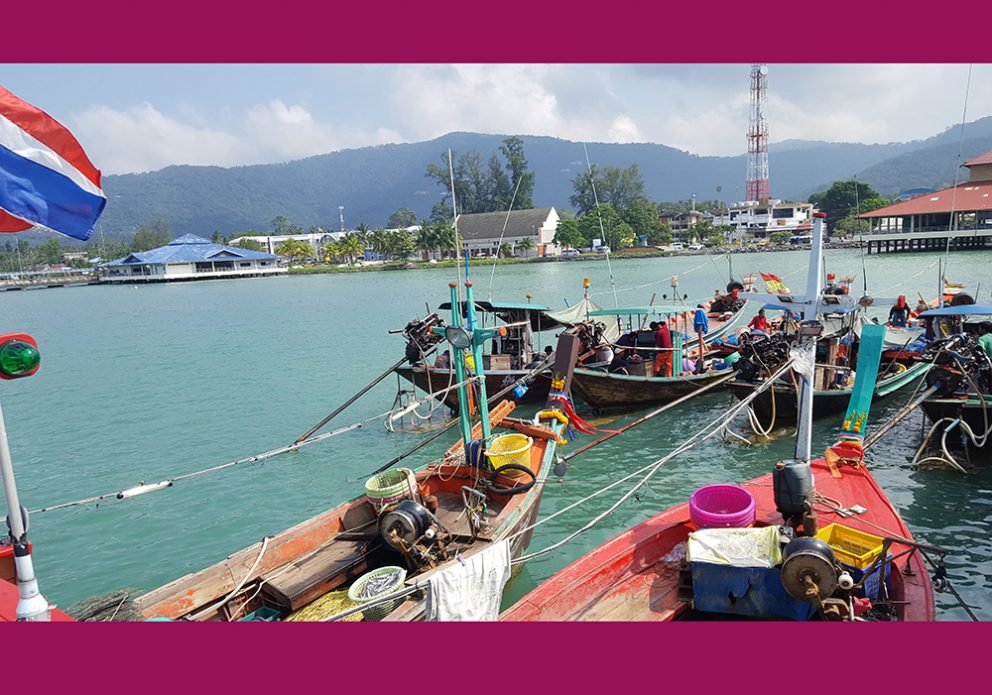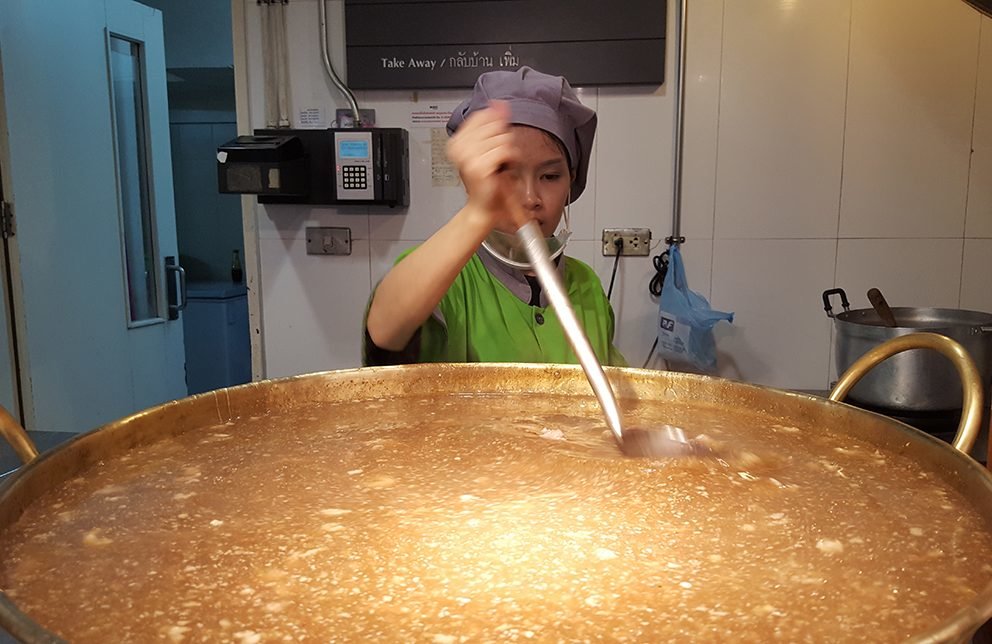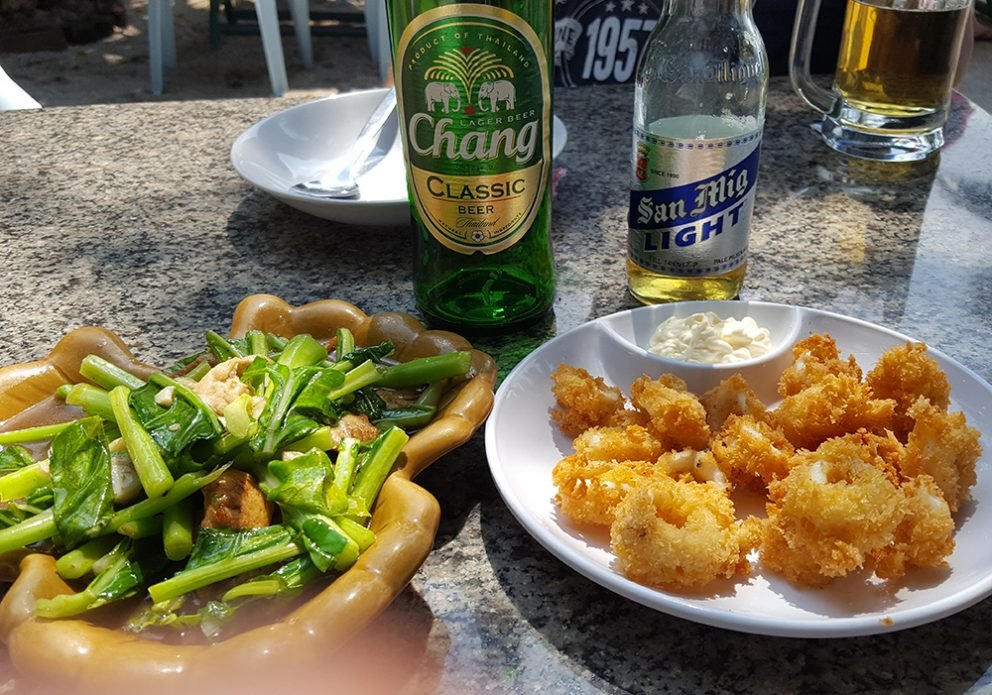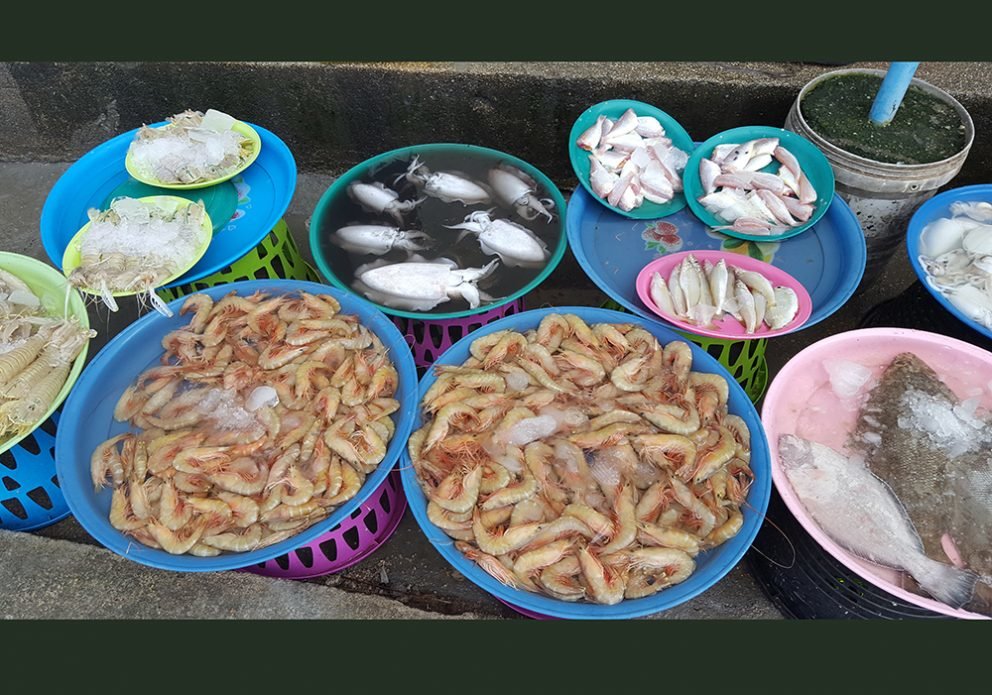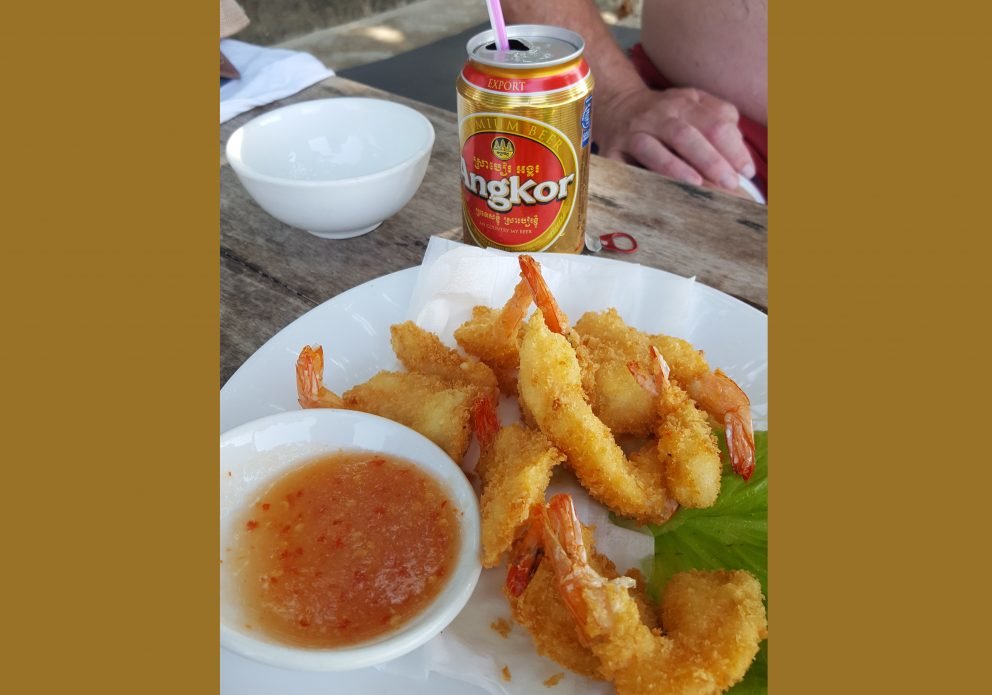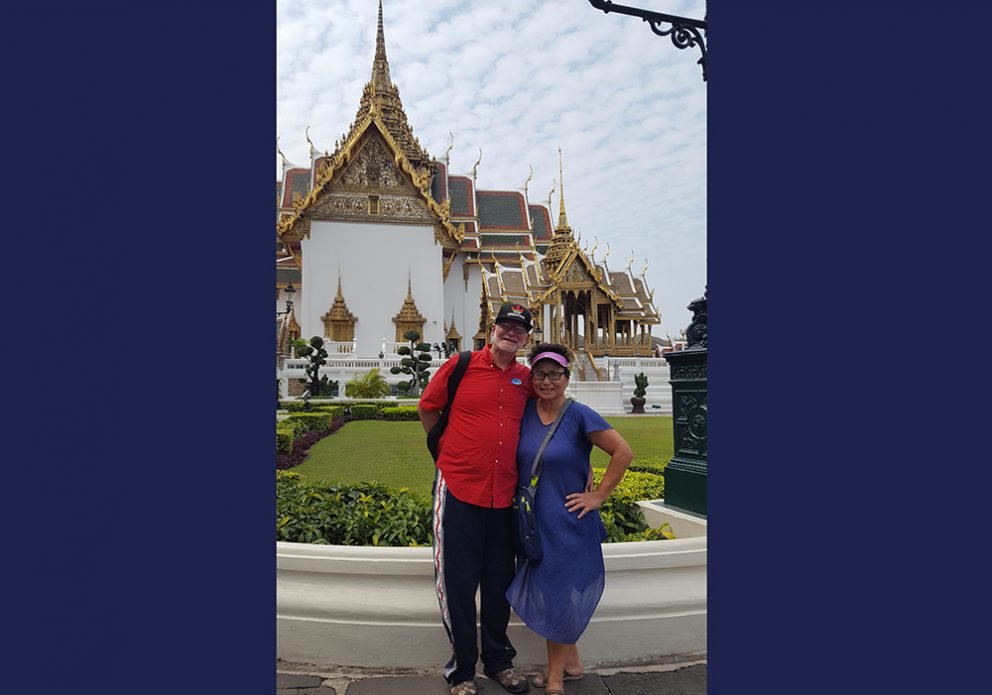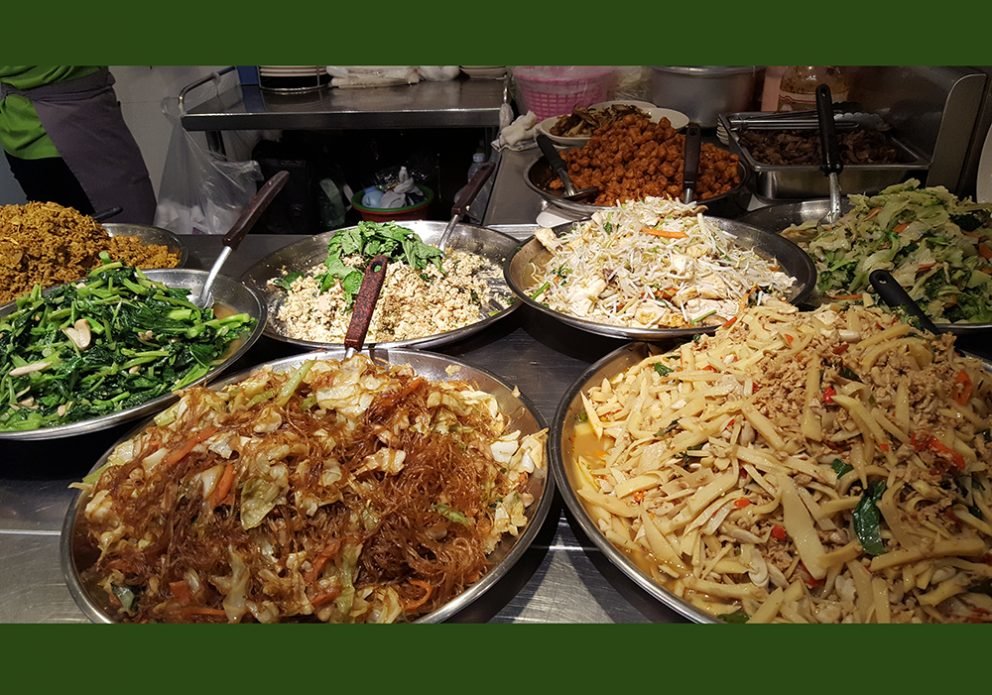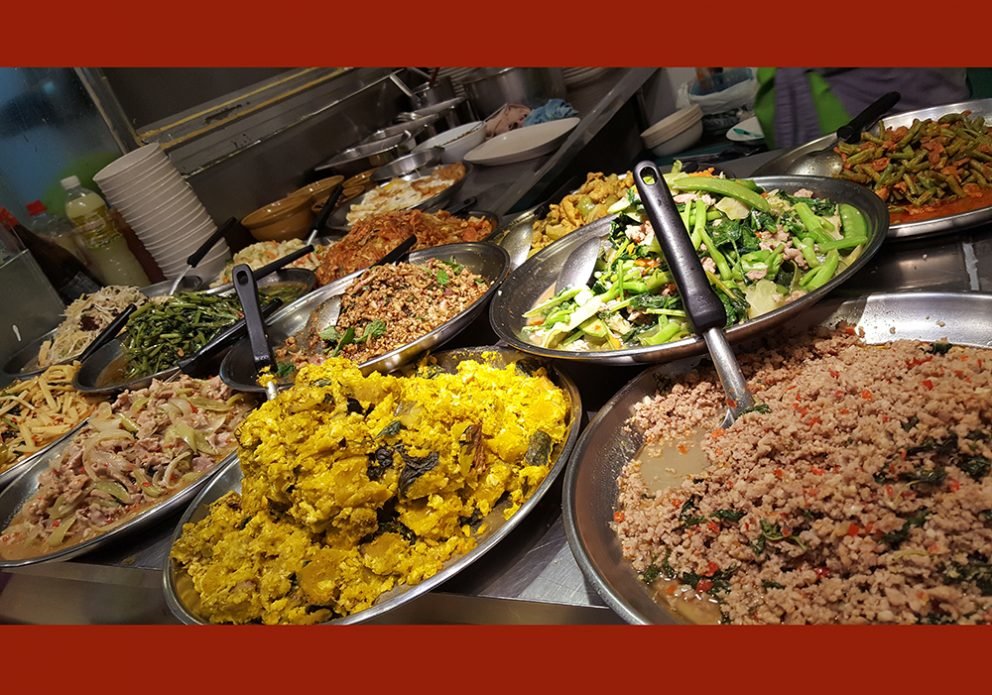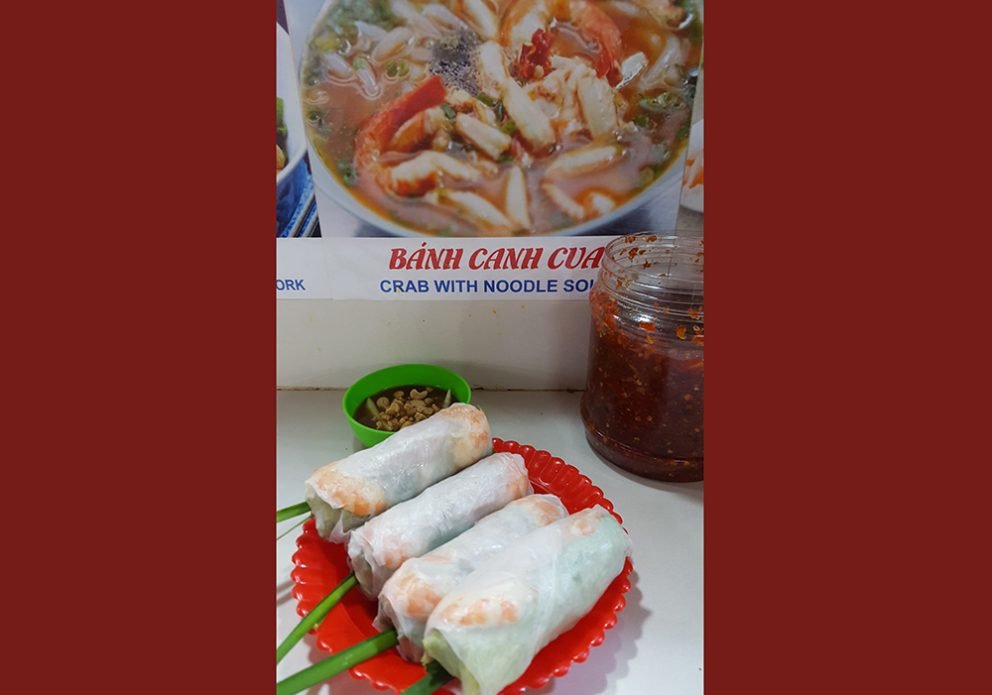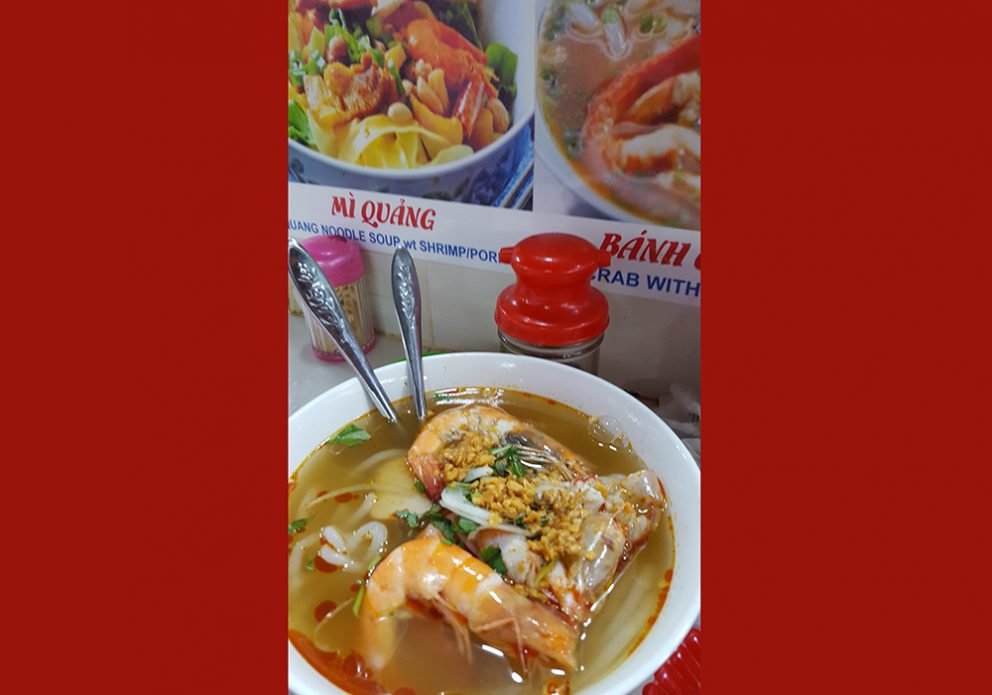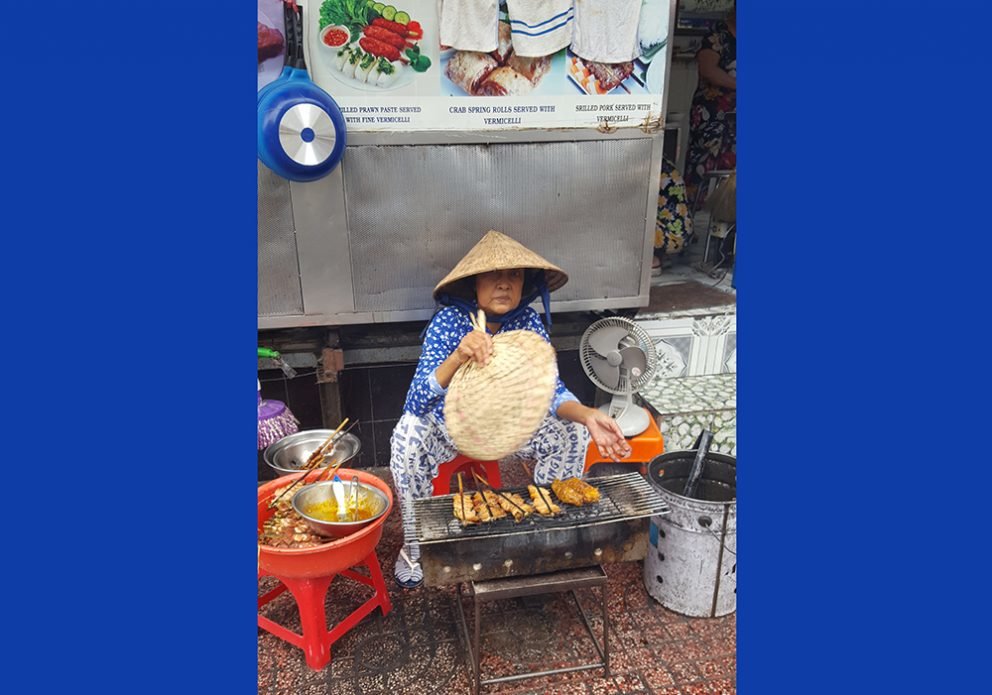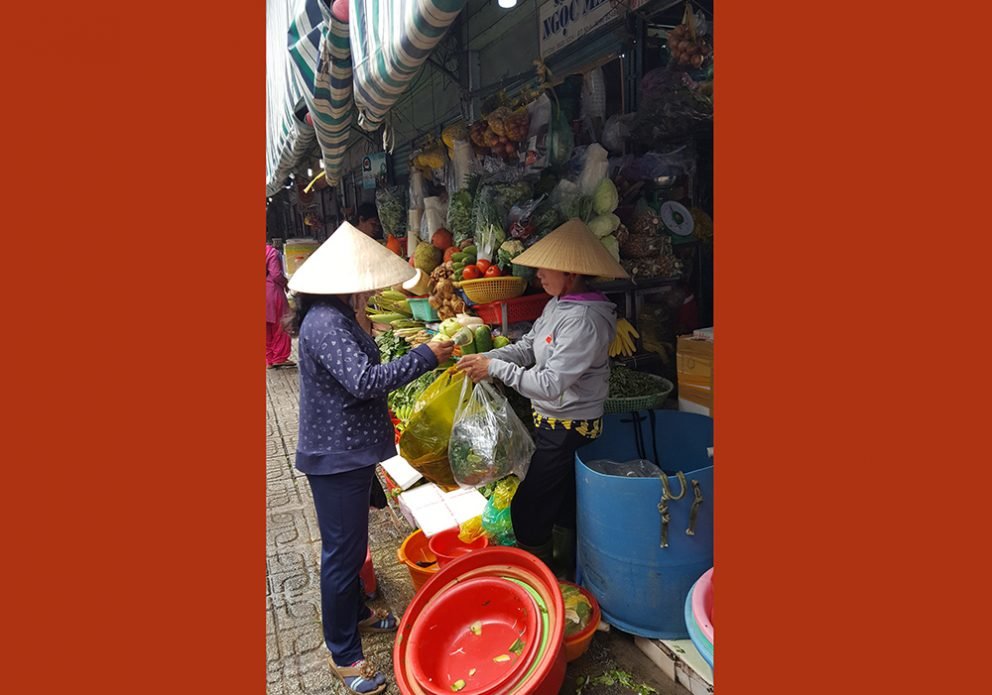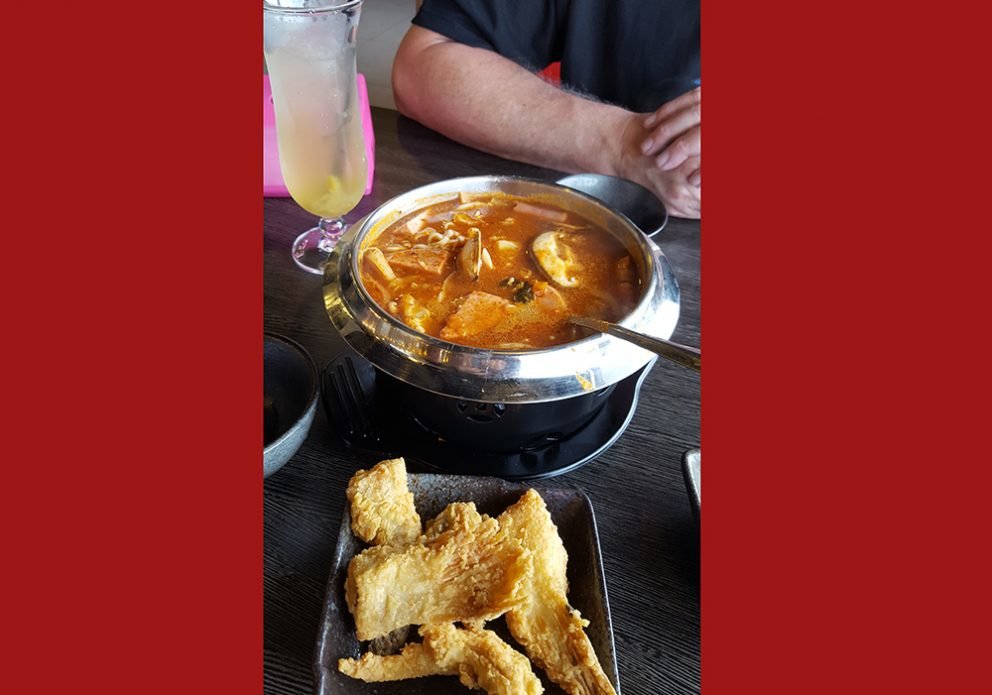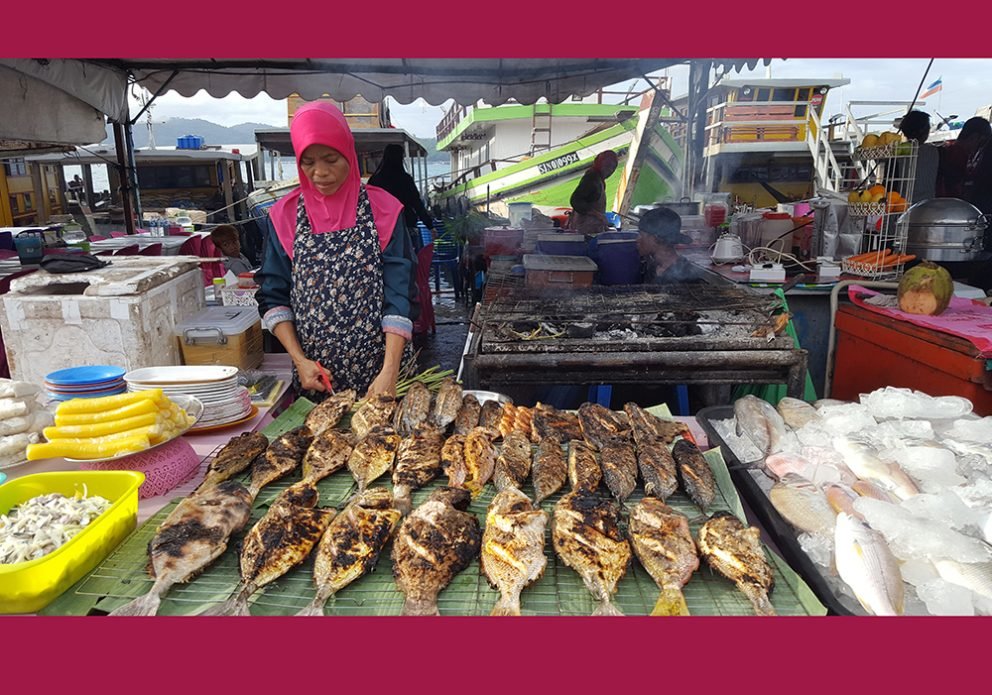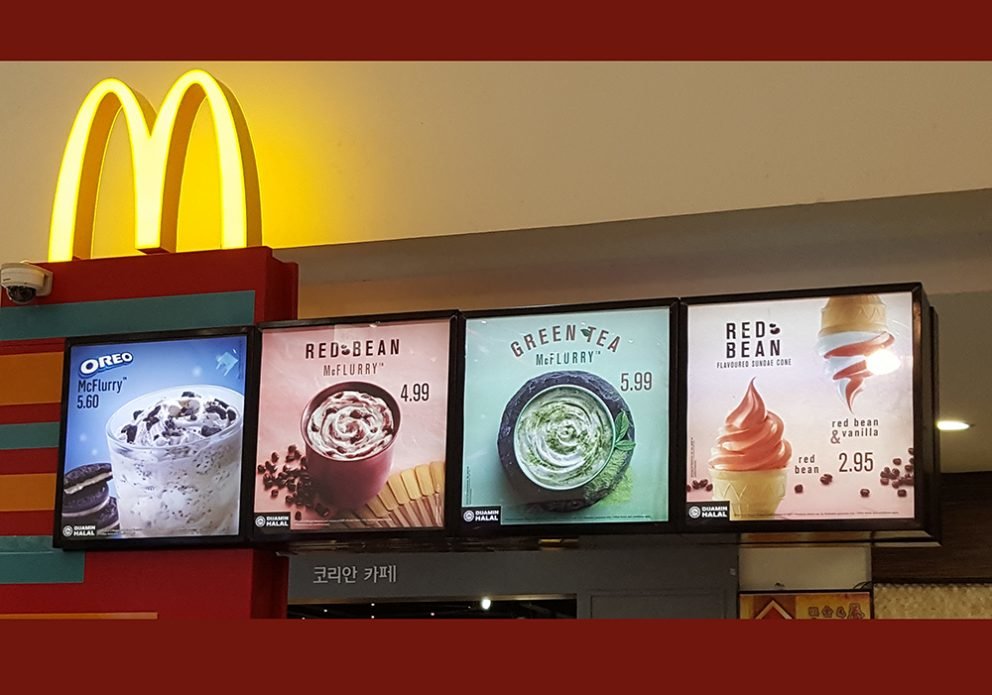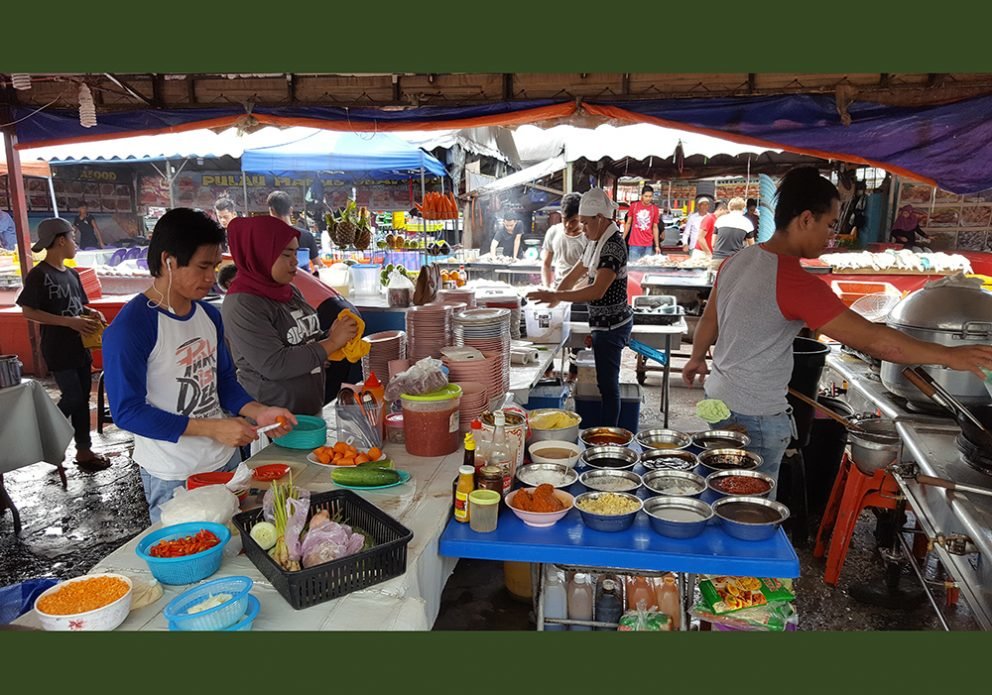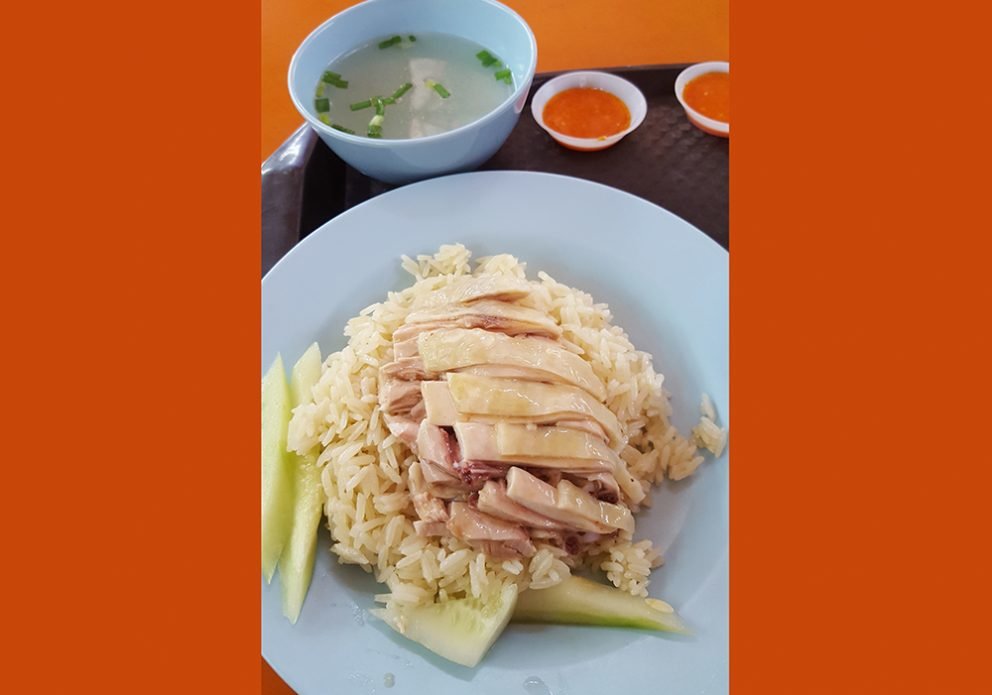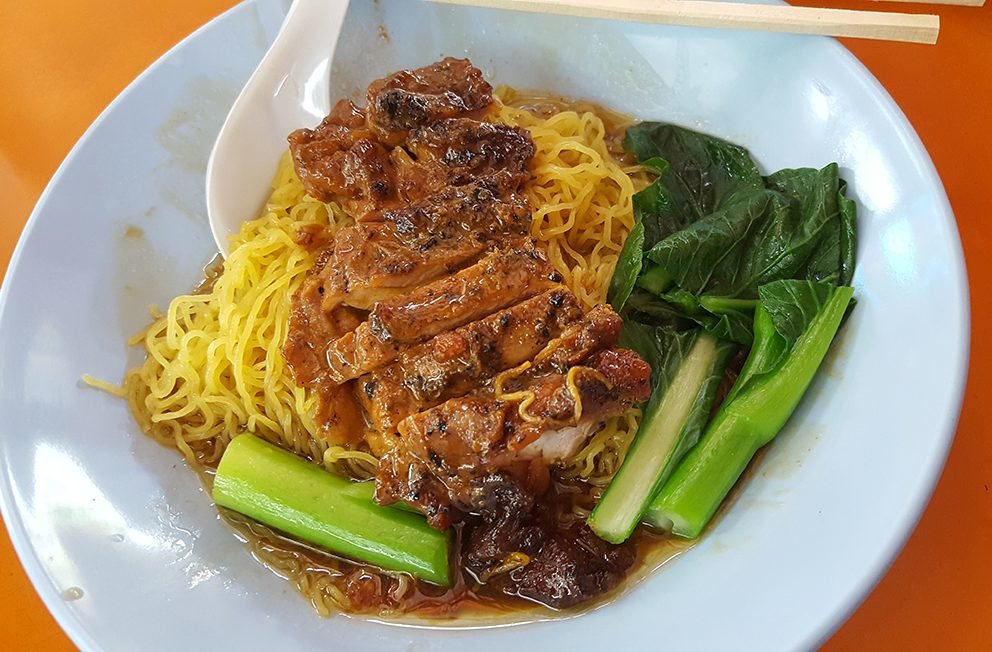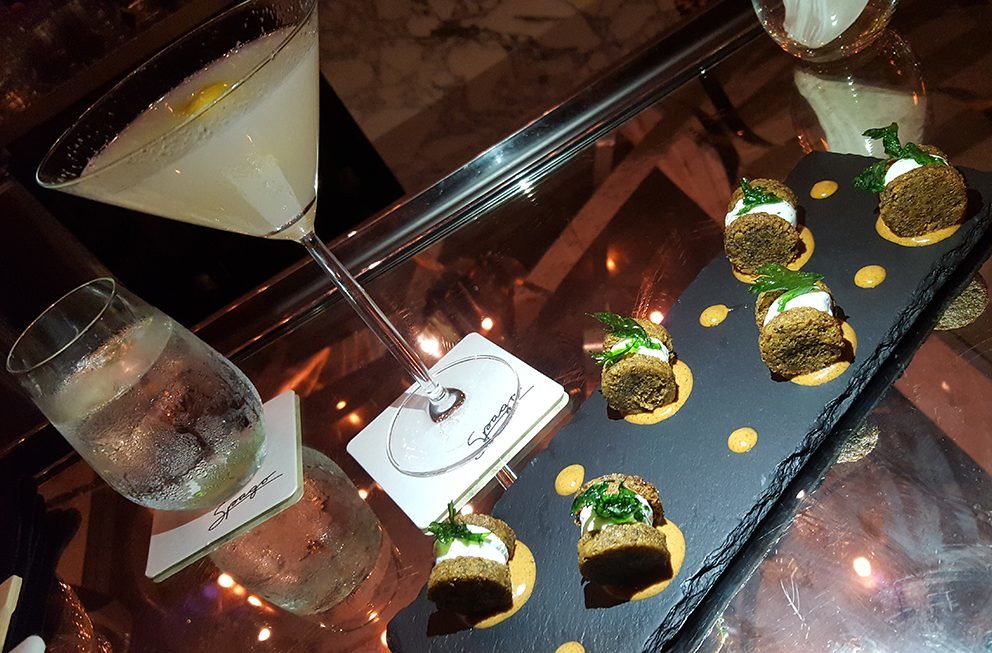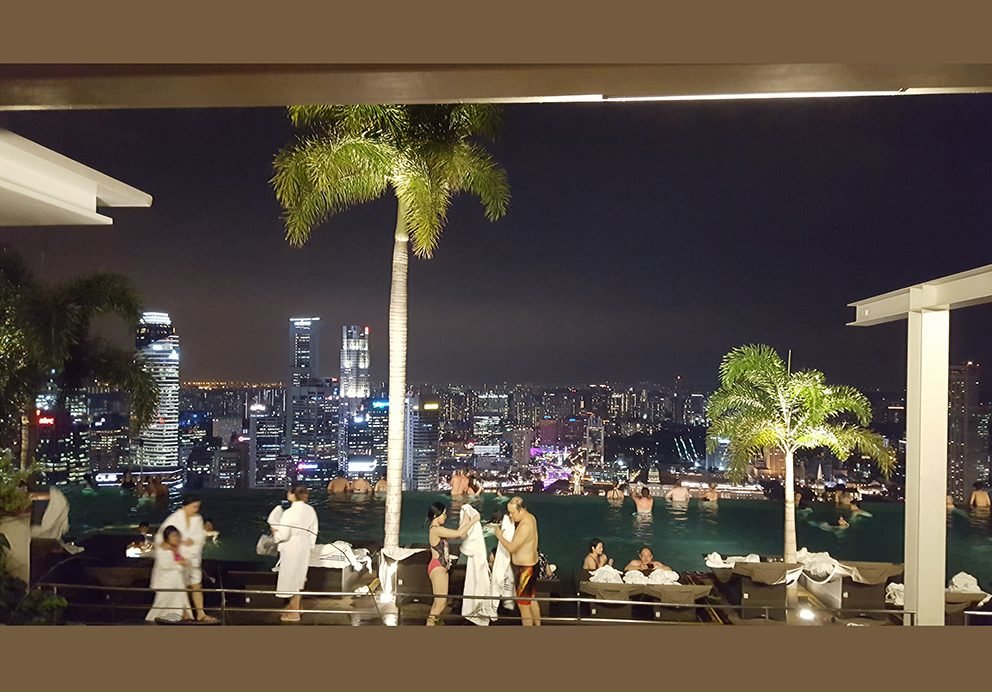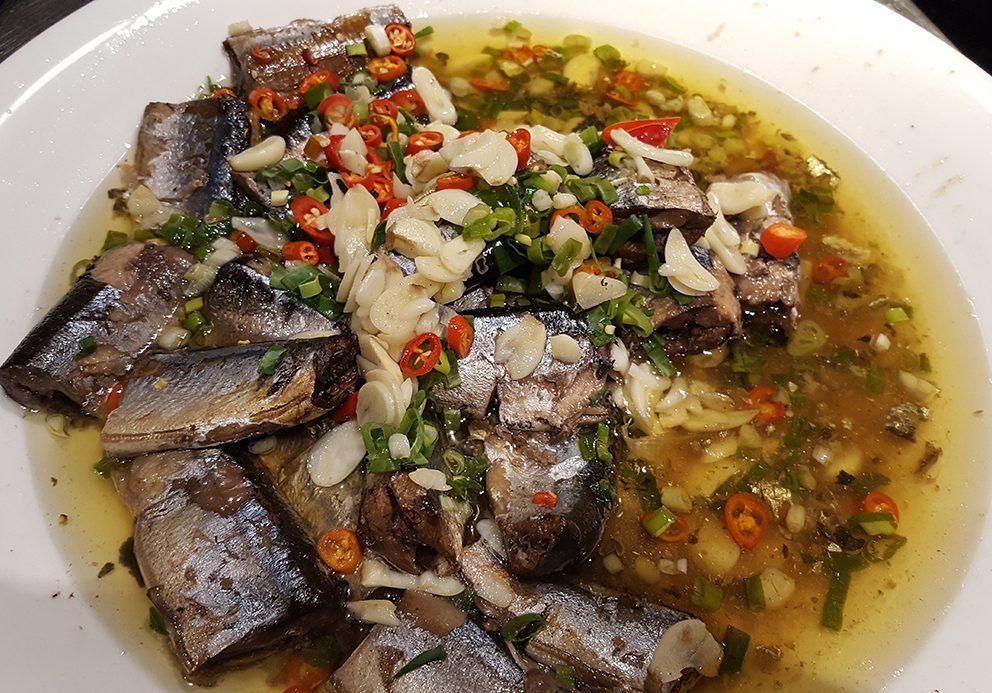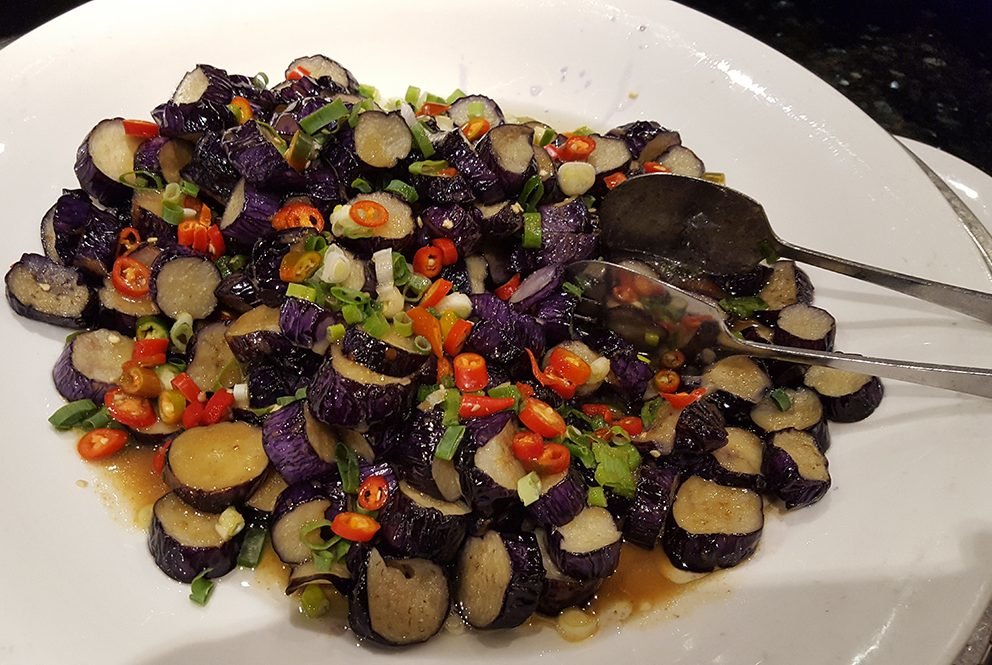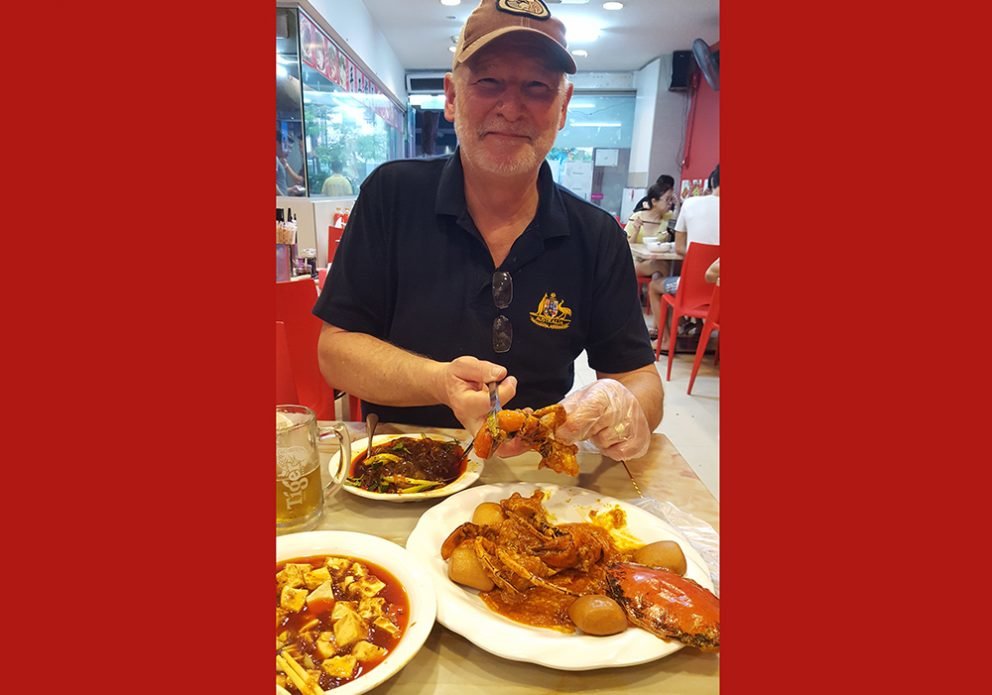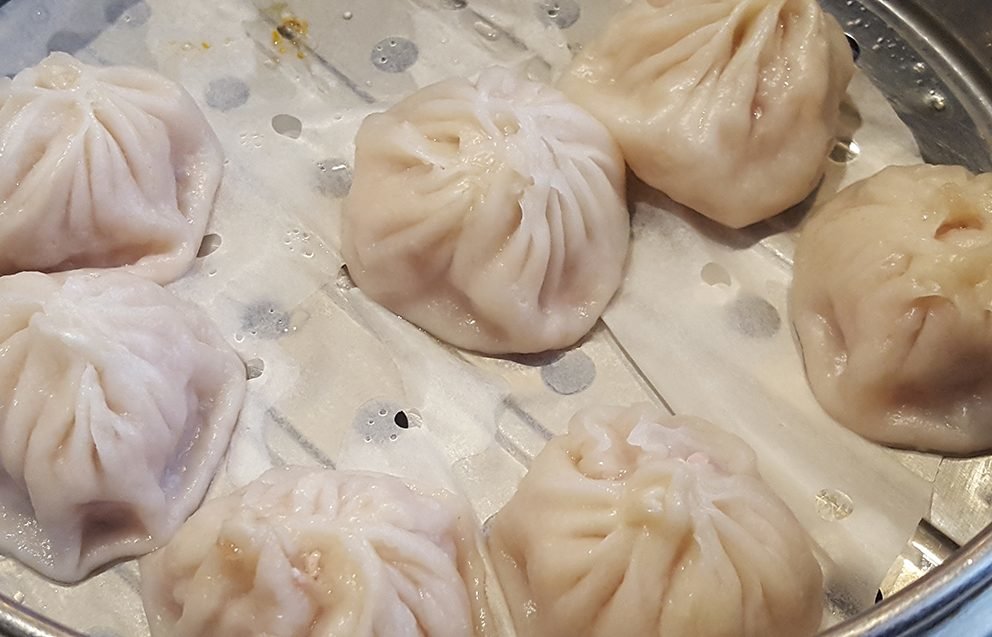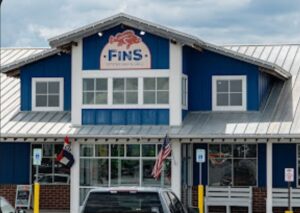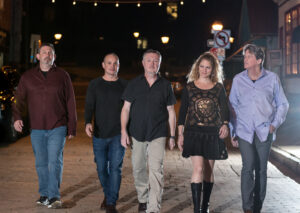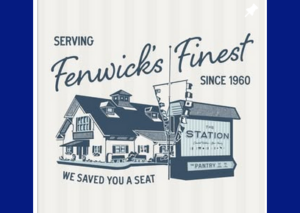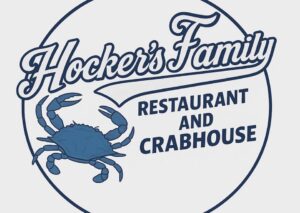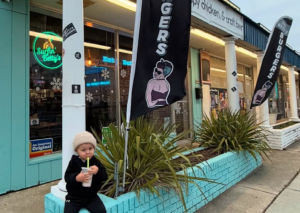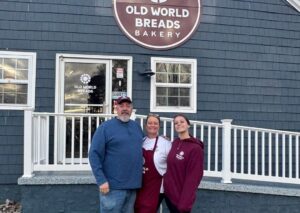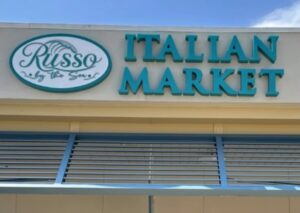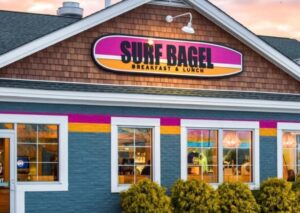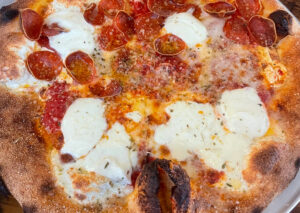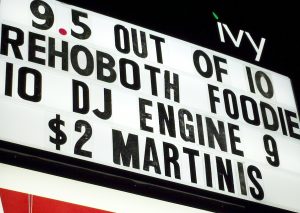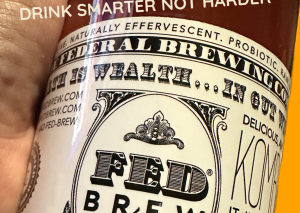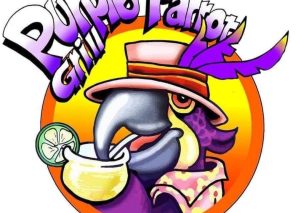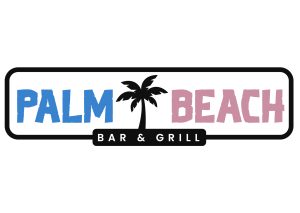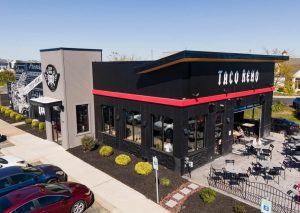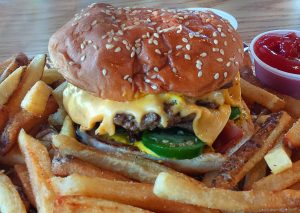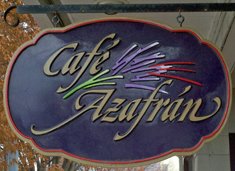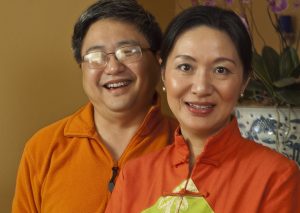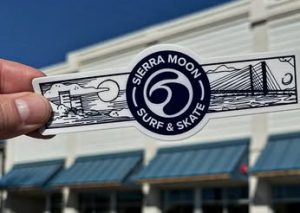I grew up in a loud, passionate, food-loving Chinese family. You know the saying, “food is love?” Well, my family certainly epitomizes every morsel of that mantra. We are known to drive long distances in search of authentic cuisine, whether it’s sitting in traffic in Shanghai, Mountain View, or New York City to find that perfect soup dumpling, Shabu Shabu, or cheesecake; or fighting our way through crowded Istanbul and Barcelona markets to sample fresh fish and Jamon Iberico. Kevin is Irish, but he went to college in Florida with Iranian, Greek and Asian students who cooked for him in exchange for his help with their computer assignments. My mother loved him for his open-minded attitude towards food. He will eat chicken feet, cow tongue, and sea cucumbers (whereas yours truly draws the line on those delicacies). So, when we decided to take a trip to Southeast Asia in January, our focus was to eat our way through Taiwan, Singapore, Thailand, Vietnam, Malaysia and Cambodia. I have been fortunate to travel to 56 countries in the last 40+ years but have not been able to get away for more than a week since we bought Teller Wines five years ago. So, during the slow month of January, we decided it was time to recharge our batteries and stomachs.
Other than our children and new granddaughter, I think, breathe, cook and dream about food 24/7. I have longed for the Chinese food I grew up with since leaving Taiwan and Los Angeles. Fortunately, Taipei did not disappoint. The breakfast is pretty typical of most Asian hotels; a 50-foot spread of American and Asian selections. For the culinary-challenged travelers, you’ll find scrambled eggs, an assortment of pastries, and breakfast meat. For people like me, nirvana awaits with congee, 1,000-year old eggs, soy bean milk with pork sung and pickled condiments, Yo-tell (think savory beignets that you dip into your sweet or savory soy bean milk), steamed buns, spicy eggplant, and sautéed pork with cabbage. The Chinese don’t eat donuts or any sweets; certainly not for breakfast (so why am I at this weight I ask?!). Dinner is a veritable smorgasbord of traditional and exotic dishes found in street vendor stalls, restaurants and dives.
Food conjures up powerful emotions for me. One of my fondest memories growing up in Taipei was my mother giving me an empty stock pot. I would walk down our street, turn the corner, and find our favorite Nio Ro Mien (spicy beef noodle soup) vendor. He filled up the pot, and I drooled all the way back to our house. In Rockville, Maryland, I can still enjoy that authentic dish (and my other favorite Szechuan numbing-spicy-hot Ma Poa Tofu)! When my mother was alive, she made Nio Ro Mien for us in her trusty pressure cooker. Thanks to Shawn Xiong at Confucius [restaurant in Rehoboth Beach], I can still get my spicy fix here without going too far!
Next stop: Singapore. It is arguably the culinary and commercial center of Southeast Asia. This island city-state of four million people is a metropolis of modern high-rise buildings, Chinese shop-houses with red-tiled roofs, sturdy Victorian buildings, Buddhist temples and Arab bazaars. Founded in 1819 by Sir Stamford Raffles of the fabled East India Company, the city is a melting pot of people and cultures. Malay, Chinese, English and Tamil are official languages. Buddhism, Taoism, Islam, Hinduism and Christianity are the major faiths. Singapore is an ever-fascinating island boasting colorful traditions and luxury hotels. But of course, Kevin and I immediately sought out our first meal in Chinatown (we intentionally booked a hotel within 10-minute walk of Chi-town). We had to try the famous chili crab, spicy tofu and authentic Chinese vegetables like my mother used to make. It was like going home. We also hunted down the famous Hainanese chicken and rice from a hawker stall the next day for lunch. I was in food heaven. Just an FYI, none of our meals cost more than $10-12. When in Asia, drink the local beer or hot tea. It’s perfect with spicy and umami foods. If you want wine, usually sweeter wines are a good match for Asian cuisine. Stay away from “hot” (high alcohol) wines because it will kill your taste buds.
On our last night in Singapore, we went to the top of the Marina Bay Sands Hotel. This is an architectural and engineering wonder. The structure has 3 towers with what looks like a boat on top. On the 57th floor is an outdoor infinity pool that is the length of three Olympic-size pools. We enjoyed the spectacular views at night while sipping on craft cocktails and amazing tapas at Wolfgang Puck’s Spago restaurant and bar. [Note: if you have Netflix, check out the documentary “World’s Most Amazing Hotels.” The MBS is featured.]
Our culinary journey took us next to the sleepy seaport of Kota Kinabalu, the capital of Malaysia's Sabah State in Northern Borneo. The town dates from 1963 and occupies the site of Jesselton, the old British colonial capital. Offshore sit the five coral islands of Tunku Rahman National Park, a Mecca for hikers and divers. To the north is Mt. Kinabalu National Park, home to the highest mountain found between New Guinea and the Himalaya. On a clear day, one can stand on its summit and look across the South China Sea to the Philippines. We ate our way through town, first at the (air-conditioned) shopping mall’s food court (where I was delighted to find gochujang-infused Korean seafood soup, dim sum and McDonald’s red bean McFlurry). Then at dockside where fishermen had just returned with the day’s catch, grilling it right in front of our eyes. Can’t get any fresher than that!
Many of you know and have had Pho. This quintessential Vietnamese noodle soup is labor intensive but oh so worth it. [Or you can just pop over to Minh’s Bistro on Coastal Highway for the real thing.] More than three decades have passed since the Vietnam War ended with the fall of Saigon. Today, Ho Chi Minh City is a bustling metropolis on the Mekong River. Yet, the essence of the city, a major trading center since the 18th century, remains unchanged. The air is filled with the cries of street hawkers and honking horns. Bicycles, motorbikes and automobiles fly down the boulevards at dizzying speeds. (Not unlike Beijing where one fears stepping off the curb to cross the street). It’s not an unusual sight to see a family of 2 adults and 2 children all riding on one little scooter (helmets optional). Because of the colonial French influence, you can enjoy a delicious Bánh Mi on crusty French baguette and other delicious French pastries. Ho Chi Minh is a city of contrasts, incredible food, friendly people and abject poverty against towering skyscrapers. When we travel, we like to find the city’s central market, where hundreds of stalls of local crafts, hot food, fresh produce, fish, and meat await you. [Think Seattle’s Pike Market, Paddy’s in Sydney, Beijing’s Night Market, Barcelona’s La Bouqueria and Istanbul’s Spice Market.] Again, our lunch with two lemonades totaled $12.
Next, we stopped in Sihanoukville, Cambodia, where we hired a Tuk Tuk to take us to a local beach and then leisurely devoured the freshest fried calamari and shrimp cooked right on the beach grill. The $1 Ankgor beer was perfect to wash it all down as we floated in crystal clear blue water. Total bill= $8.
Scratching off another bucket-list food destination- Bangkok. This enchanting city on the Chao Phraya River is a magical place where graceful dancers perform in shimmering silk gowns, temples with gold-leaf spires harbor priceless Buddhas and riverboats cruise a maze of canals. The only nation in Southeast Asia to escape colonial rule, Thailand offers a rich and ancient culture that flowered unhindered by Western influence. Proud and strongly nationalistic, the Thai people call their nation Muang Thai – “Land of the Free.” Founded in 1782 by King Rama I, Bangkok is home to more than eight million people. The capital's proper name is Krung Thep – the “City of Angels.” One lunch, we devoured three authentic Thai dishes at the MBK food court. The total price we paid was $9.75 (including two bottled waters and a Thai iced tea). The Siam district is also home to dozens of street vendors and markets where you can find just about anything your foodie heart desires.
Our final stop was Ko Samui, Thailand's third largest island. Today, Ko Samui's premier charms are its powdery white beaches, its Buddhist temples, and its crystalline waters. Despite the island's increasing popularity, it retains a casual and unspoiled air that offers a bracing tonic to the experienced traveler. Most of the island's population resides in Nathon, Ko Samui's capital. The island's first settlers were a mix of Hainanese coconut farmers and Malay fishermen. Today, it is still unspoiled and beautiful. We enjoyed one of our last authentic Asian meals at a beach restaurant. Washed it all down with the local Chang beer. It doesn’t get better than this.
Travel for us is a cultural and culinary adventure. Although we didn’t have much wine on this trip, we thoroughly embraced the local beers and cocktails. When in Southeast Asia . . .!
[Ed. Note: Catherine provided us with well over 20 amazing photos! Use the right/left pointers on the images to scroll through her travel gallery.]


